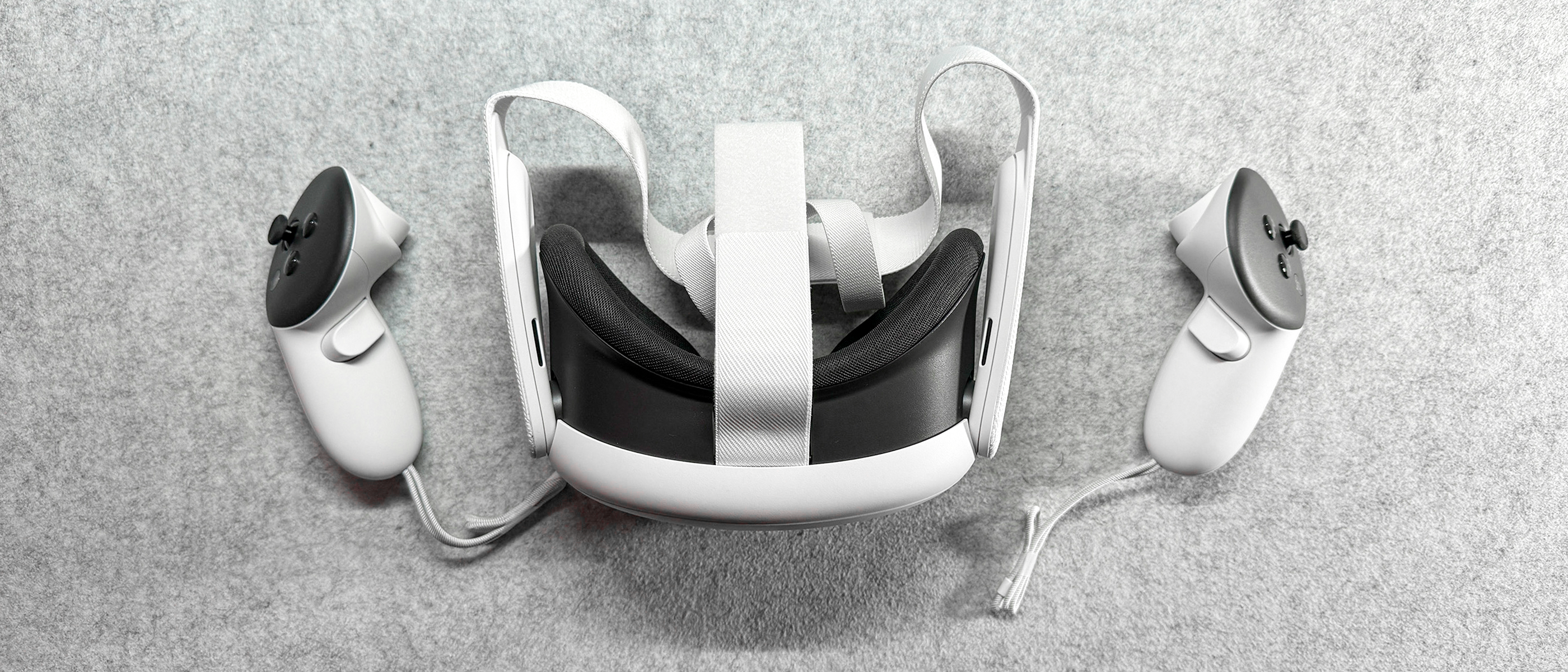Space Verdict
The Meta Quest 3 has toppled its predecessor to be the easiest consumer-level VR to recommend to just about anyone.
Pros
- +
Vastly improved display
- +
Competitively priced
- +
Compatible with your PC
Cons
- -
Additional accessories are pricey
- -
AR and MR are still not quite there
Why you can trust Space.com
The arrival of the Meta Quest 3 VR headset is welcome to all those who game using Virtual Reality. While the Metaverse may not have landed in the way that Meta (the company) had hoped, anecdotally, VR feels like a much more approachable technology than it has done.
A large part of the reason we’re finding more of the tech in living rooms and bedrooms around the globe is in no small part thanks to the Meta Quest 2 which we previously reviewed, which itself went through a few revisions. A compact headset with a decent background ecosystem and an affordable price point, the Quest 2 lasted for years, but it’s time for another go-round.
This time, the Meta Quest 3 (no awkward Oculus memories here) refines what came before. There’s more power, more storage, and it’s more comfortable, too, and while the mixed and augmented reality pillars aren’t its strongest, it remains the headset to buy for anyone curious about VR, AR, or MR.
If you’re already a Quest 2 veteran, it’s worth an upgrade, too. Many of its smaller updates stack up to justify the leap in price tag, particularly if you can trade your current model in. But do we think it's worthy of sitting in our Best VR headsets guide? Read on to find out.
Meta Quest 3: Design
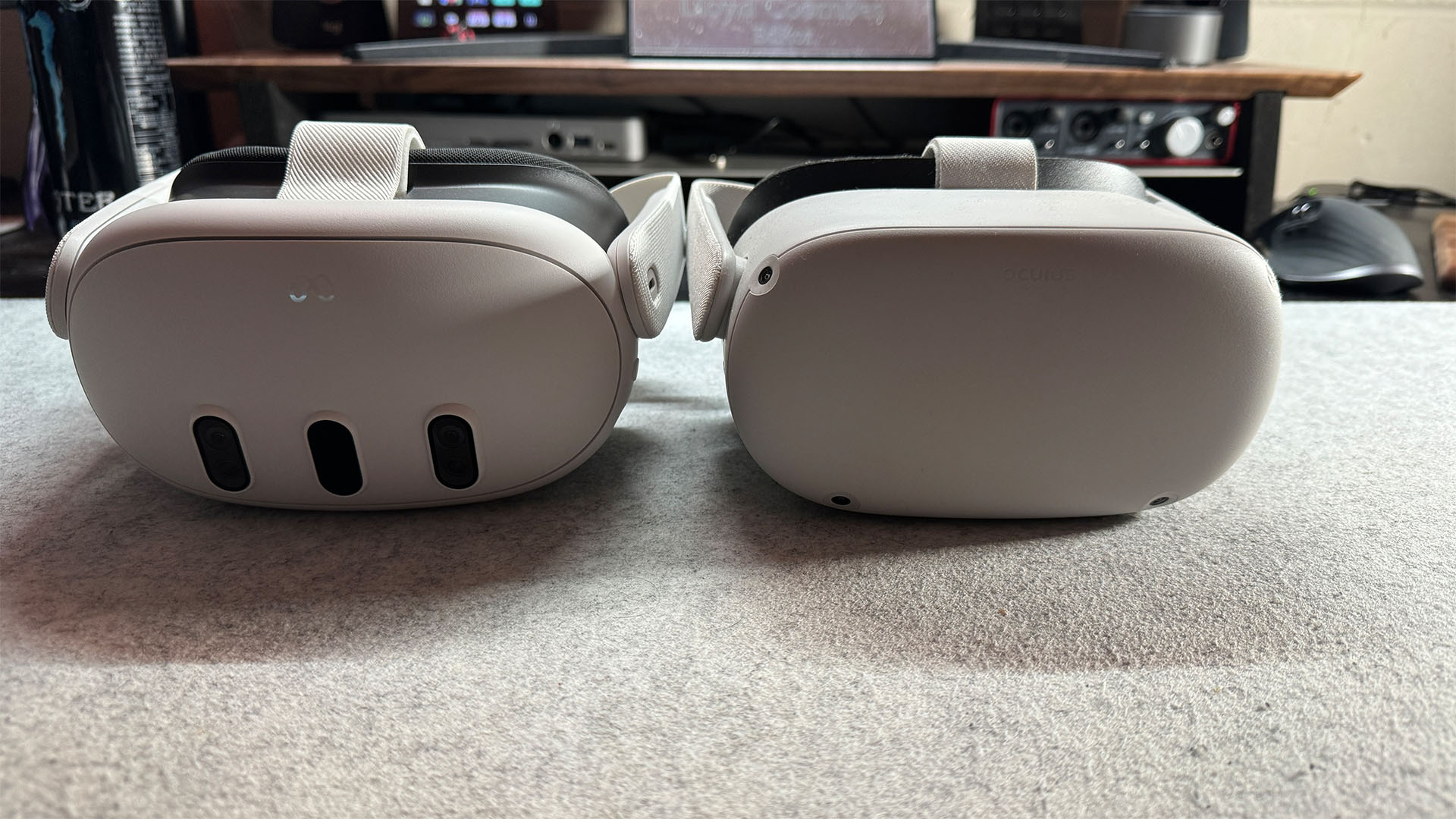
- Controllers included in the box
- Drastic improvement to display
- Comfortable to wear
If you’ve seen a Meta Quest 2, you’ll no doubt notice a lot of similarities with the Quest 3. It’s surprisingly more shallow than its predecessor, aside from the black portion, and it maintains the same white plastic shell.
It’s ever so slightly heavier than its predecessor (by 3g) but it feels much more comfortable for long periods thanks to a softer mesh around the eyes. In fact, it feels almost like the same sort of sponginess as the AirPods Max headphones, and I’ve loved those for months — suggesting this will maintain a decent level of comfort.
Platforms: Standalone, PC via wired Meta Link and wireless Air Link
Price: $499.99/£479.99 for 128 GB, $649.99/£6299.99 for 512 GB
Resolution: 2064 x 2208 pixels per eye
Field of view: 110 degrees
Refresh rate: 120 Hz experimental
Controllers: Touch Plus Controllers (included)
The head strap is more balanced and adjustable while wearing than the Quest 2’s, too. There’s also an adjustment button to help alter how close the headset is to your eyes — particularly useful for glasses wearers.
On the front, you’ll find a trio of cutouts that help with mixed and augmented reality, as well as setting a safe space to play in - but more on that shortly.
Underneath the headset, you’ll find a wheel to adjust focus, while there’s also a volume button. The power button is just under the USB-C charging port on the left-hand side.
If you’ve used the Quest 2 you’ll no doubt notice the 30% pixel-per-eye bump immediately — the Quest 3 looks much, much clearer, and if you’ve adjusted correctly it helps mitigate that 'screen door' effect that last-generation headsets had. It’s still there, but it’s much less noticeable, and you can see much more around the extremities thanks to new pancake lenses. 120Hz is also here from launch, having rolled out to Quest 2 throughout beta testing.
Meta Quest 3: Setup and performance
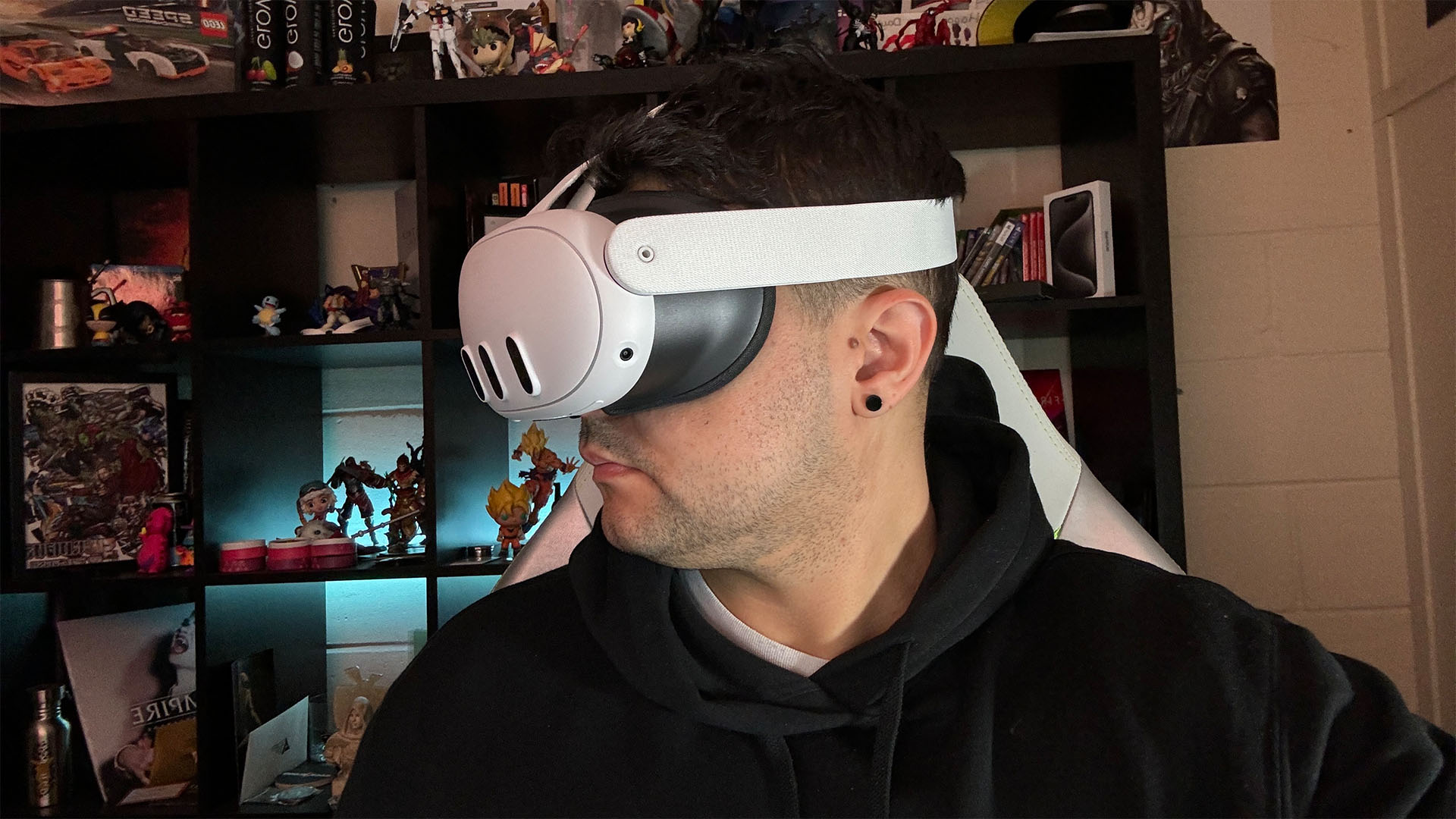
- Still one of the smoothest setup processes around
- Facebook account is no longer mandatory
- Easy to set a 'barrier' around your play area
From the jump, let’s make it clear, one of my biggest issues with the Meta Quest 2 was its insistence on linking users to a Facebook account, meaning you couldn’t enjoy one without the other.
That’s thankfully gone, with purchases now tied to a Meta account that has its own friends list and online status should you choose but you can equally link it to your existing Facebook account if you’d prefer. If nothing else, I’m just glad we have a choice now.
Setup was always simple on the Meta Quest 2, but somehow gets even smoother in the Quest 3 thanks to improved passthrough. Last generation, you’d need to complete a lot of the setup in the Android or iOS app, and while that’s still the case, the greatly improved passthrough that lets you see the world around you through the headset, actually means I was able to log in, and even type some notes for this review on my Windows PC, without taking it off.
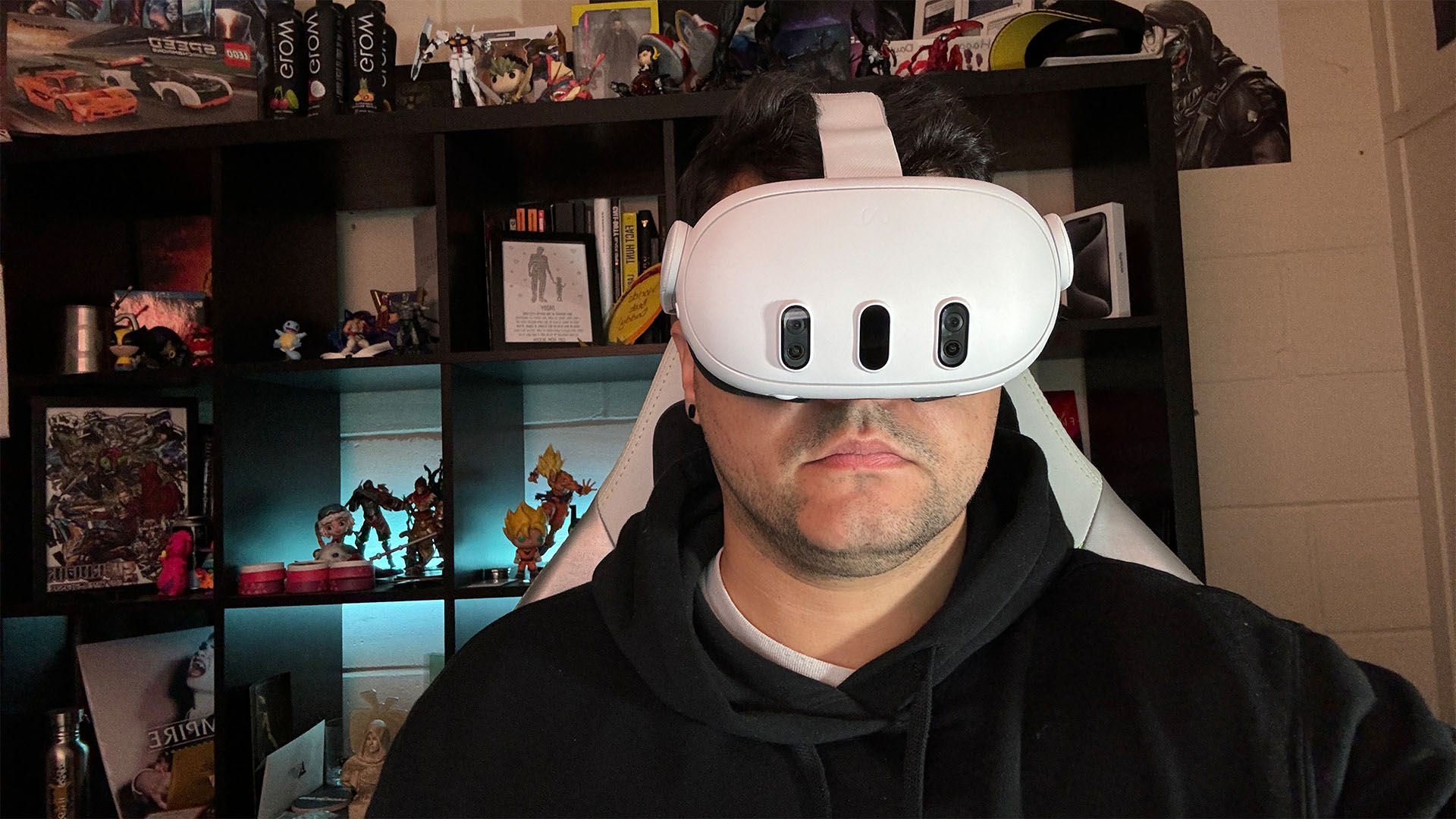
Controllers pair quickly, and users can create their own Avatars from a set of customization options. It really is a matter of minutes until you’re ready, and once you hop into the library, you’ll be asked which of your already-owned Quest 2 apps you want to install.
You can set up your own boundaries during the setup process, and I found the Quest 3’s scanner to do a much better job than some headsets of calculating where the floor is or moving around things like tables. It’s fun to watch, too, as your home’s geometry gets scanned into the digital space.
The Quest 3 has a fantastic pair of speakers built into the strap, and they’re impressively nuanced, as well as being surprisingly loud. You can connect wired earphones, too.
Sadly, I had too much lag with Bluetooth audio, but the built-in speakers were so good I didn’t mind too much. Still, if you’re planning to play games or explore space with someone next to you, you may want to break out the old wired earphones.
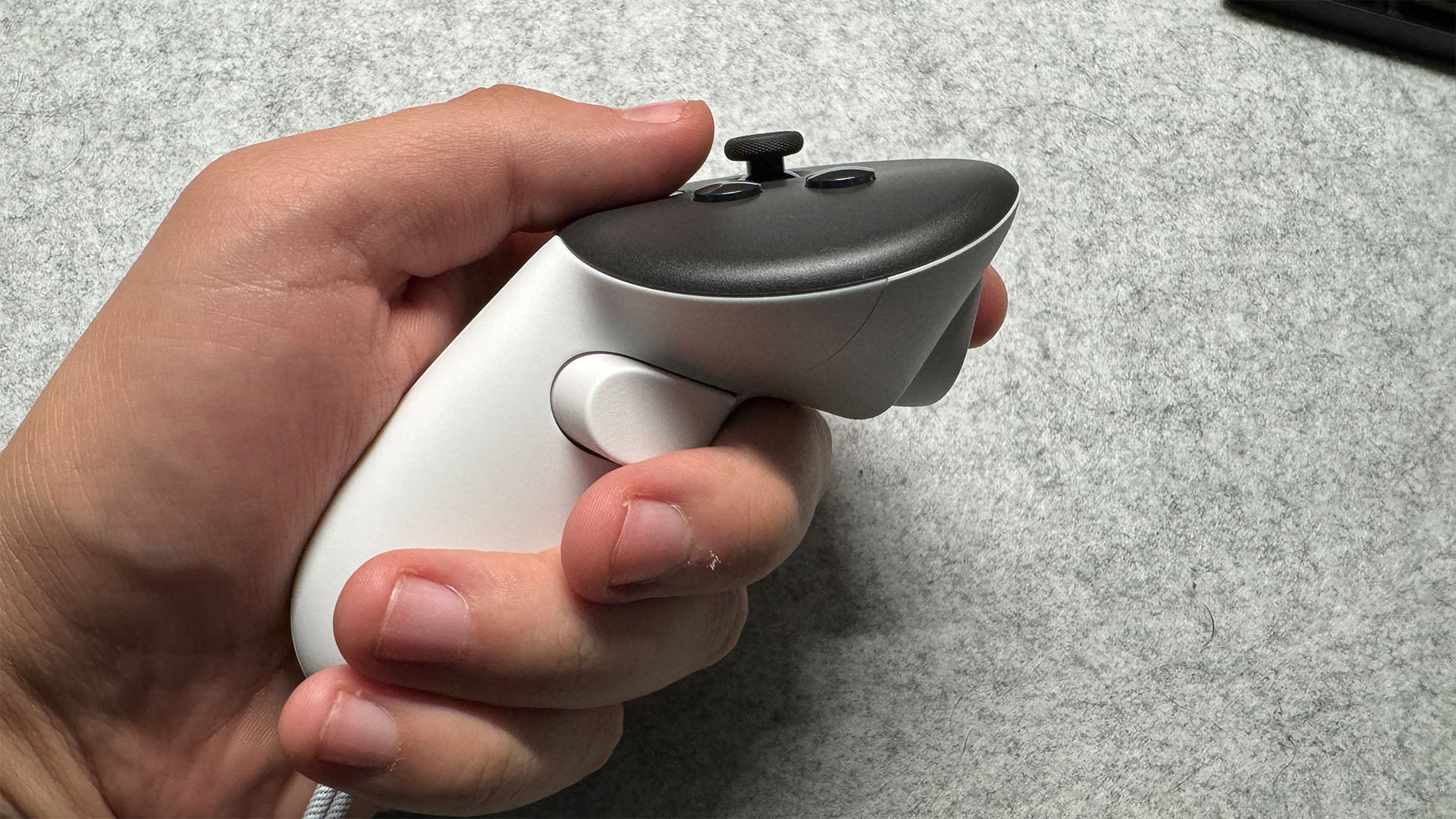
Finally, battery life is anywhere from an hour and a half to just over two hours. It’s not a lot, and Meta offers an extra battery, but as someone who enjoys VR sessions in bursts, it felt like just the right amount for me. With huge RPGs like Asgard’s Wrath 2 on the way that’ll no doubt feel like huge time-sinks, you may want to consider that extra power option, though.
Meta Quest 3: Software and games
- Sizeable library
- The store isn’t always the cheapest
- There’s PCVR functionality, too
The Meta Quest 2’s library was diverse and easy to access, and the same can be said of the Quest 3’s. It can run just about any Quest 2 app, too (I’d say all, but there may be some exceptions).
That means Vader Immortal is here, Beat Saber is here, and Cities VR is here, and they all look better than ever thanks to the sharper resolution. Devs will need to update their games to make use of the faster chip inside the headset, though.

Still, the secret weapon to its predecessor was always being able to hook it up to a gaming rig for the likes of Half-Life Alyx and other PCVR titles and I’m pleased to say that the same applies here. I’ve spent just as much time playing F1 23 or Elite Dangerous via my (admittedly pretty beefy) PC as I have played games on the headset itself.
That PCVR functionality also helps to sidestep the Meta storefront, too. While it does offer plenty of regular discounts, it’s not on the same level as, say, Steam when it comes to slashing prices.
Meta Quest 3: Augmented Reality and Mixed Reality
- Augmented/Mixed reality is possible
- Not many titles support it yet
I’ve touched on the passthrough earlier, but it really is a great feature for removing the 'tunnel vision' that can often make VR feel quite isolating.
While there’s a button on the menu to enter 'immersive mode', I enjoyed being able to flick through my library while being present in my own lounge or office. I also love that you can switch between the two by double-tapping on the side of the headset, which feels very futuristic.
It’s part of Meta’s play for augmented reality and while there’s a limited number of mixed reality compatible titles, the fact that this tech is in a consumer headset should see more developers take advantage. You can use hand-tracking, too, and it’s way better than the prior headset.
Meta Quest 3: Price
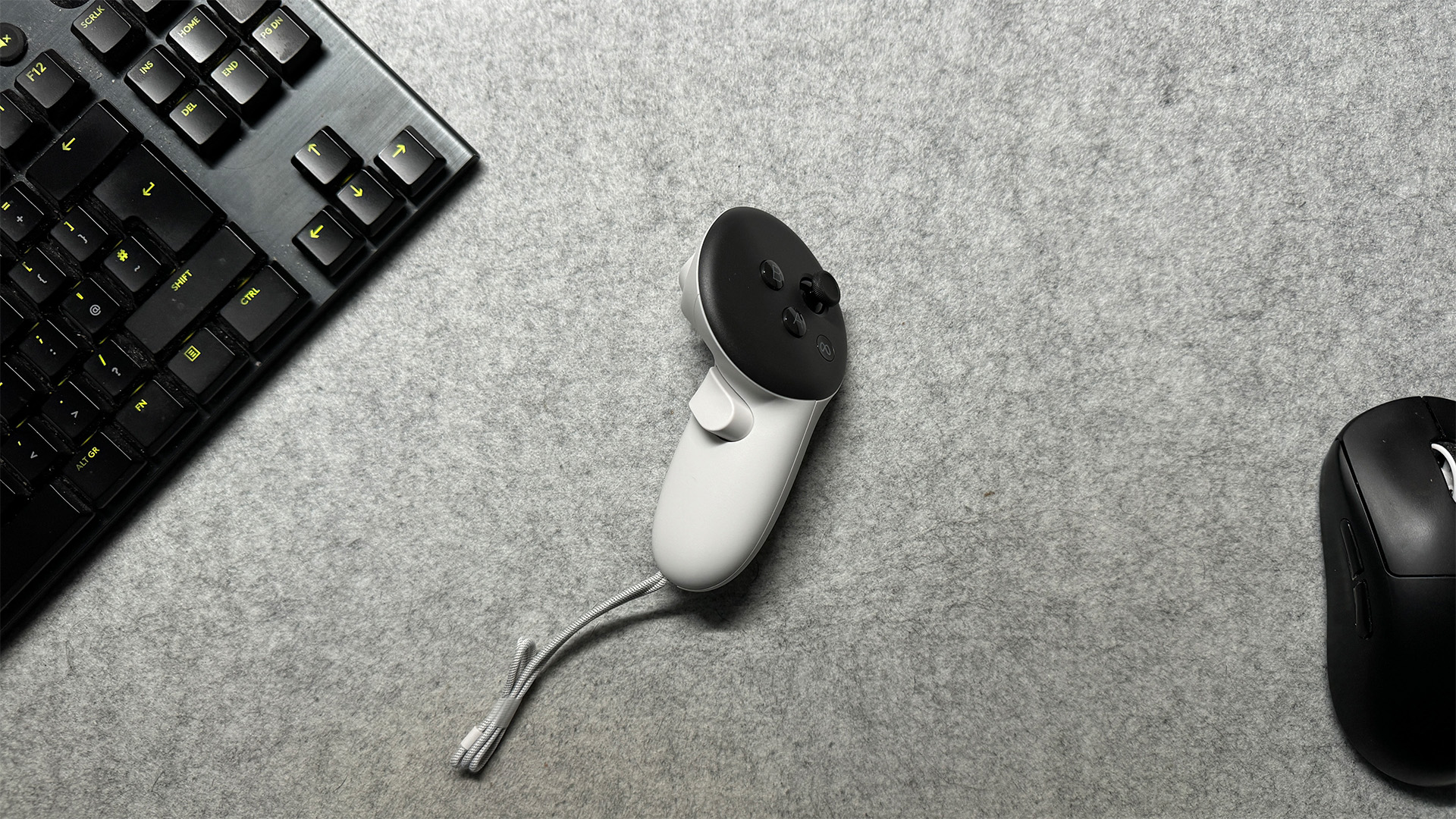
- 128GB or 512GB versions are available
- $499.99/£479.99 or $649.99/£619.99 respectively
- More expensive than the Quest 2
At $399 for the base 128 GB model (we’ve not come even close to filling that), the Meta Quest 2 is reasonable value for money and still cheaper than the competition. However, the recent $100/£100 price increase means it’s not quite the steal it once was.
Here’s the lowdown — the Quest 3 is more expensive than its older sibling, starting at $100 more expensive. Still, the Quest 2 launched with 64GB and shifted to 128GB or 256GB options whereas the Quest 3 starts at 128GB and also comes in a 512GB version (which my review unit is).
That’s a lot of space, but depending on how many games or experiences you’re considering downloading, the 128GB might be perfect and PCVR games are all running from your PC, anyway.
Should you buy the Meta Quest 3?
- Related: VR headset deals
If you’re looking to experience VR without a console or PC in sight, the Meta Quest 3 just leapfrogged its competitor to be the best overall value package in the medium.
An array of small improvements add up, and that makes it an easy recommendation if your Meta Quest 2 (or Oculus version) is getting a little long in the tooth.
If Meta Quest 3 isn’t for you...
While it’s not getting any younger, consider the Meta Quest 2 as an affordable introduction to the magic of VR that offers a lot of what its successor does. Its controllers are bulkier and that screen door effect is worse, but other than that, it remains an excellent headset.
If you’ve got a powerful PC, the Valve Index remains a great option, while PS5 owners can enjoy the PSVR 2, which launched in the gap between the Quest 2 and Quest 3.
Not only does it offer plenty of impressive features like eye-tracking, but it’ll hopefully get Sony’s first-party studios supporting it for years.
Join our Space Forums to keep talking space on the latest missions, night sky and more! And if you have a news tip, correction or comment, let us know at: community@space.com.
Lloyd Coombes freelance tech and fitness writer. He's an expert in all things Apple as well as in computer and gaming tech, with previous works published on TechRadar, Tom's Guide, Live Science and more. You'll find him regularly testing the latest MacBook or iPhone, but he spends most of his time writing about video games as Gaming Editor for the Daily Star. He also covers board games and virtual reality, just to round out the nerdy pursuits.
